Janice Visits The Penguins (Page Ten)
We departed the Cape Of Good Hope and headed north on the eastern half of the penninsula toward Boulders Beach and the wildlife preserve.


A scenic drive to the north
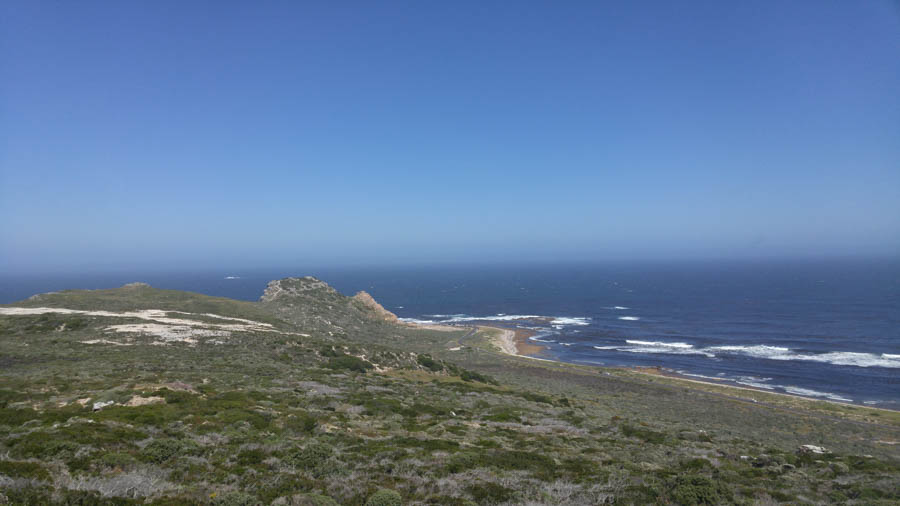
Pristine but rugged beaches
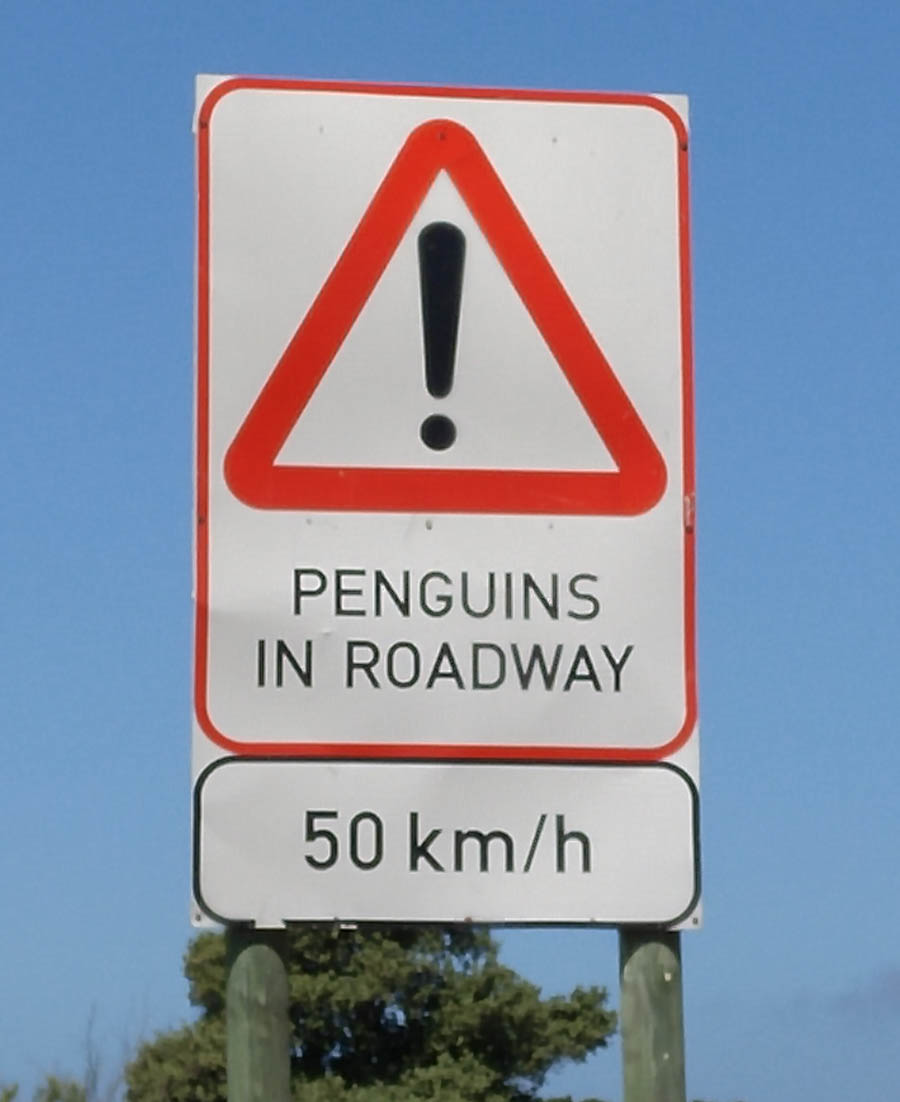
Why did the Penguin cross the road?
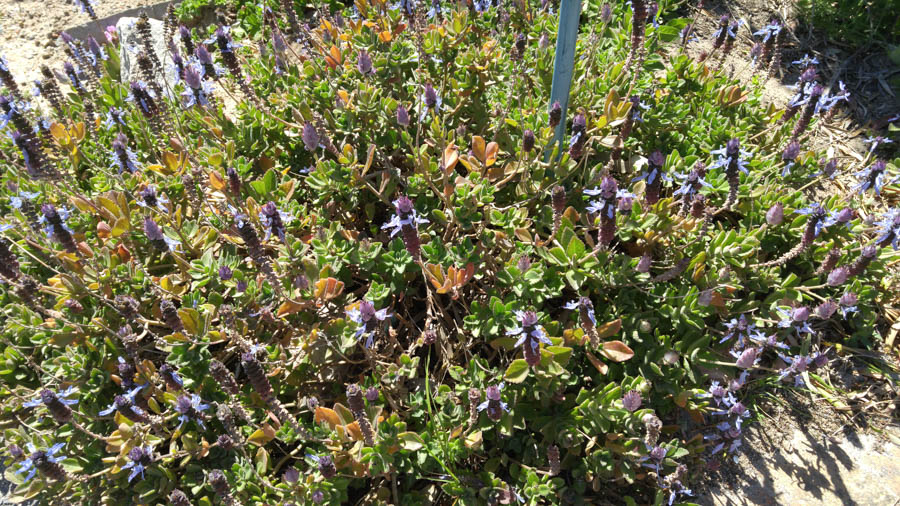
The flowers are quite prolific on the sides of the highway!

Did You Know? - Boulders Penguin Colony in Simons Town is home to a unique and endangered land-based colony of African Penguins. This colony is one of only a few in the world, and the site has become famous and a popular international tourist destination.
The Boulders section of TMNP consists of 3 pristine beaches, 1 penguin viewing area and 3 boardwalks. The boardwalks were built as a measure to allow for viewing of these wonderful birds, whilst keeping them safe from poking fingers, so please be sure to stay on the boardwalks at all times within the viewing area.
This beach is ideal for children as immense boulders shelter the cove from currents, wind and large waves - but please always take care. Don't touch or feed the penguins – they may look cute and cuddly but their beaks are as sharp as razors and if they feel threatened they have no qualms about nipping the odd finger or nose.
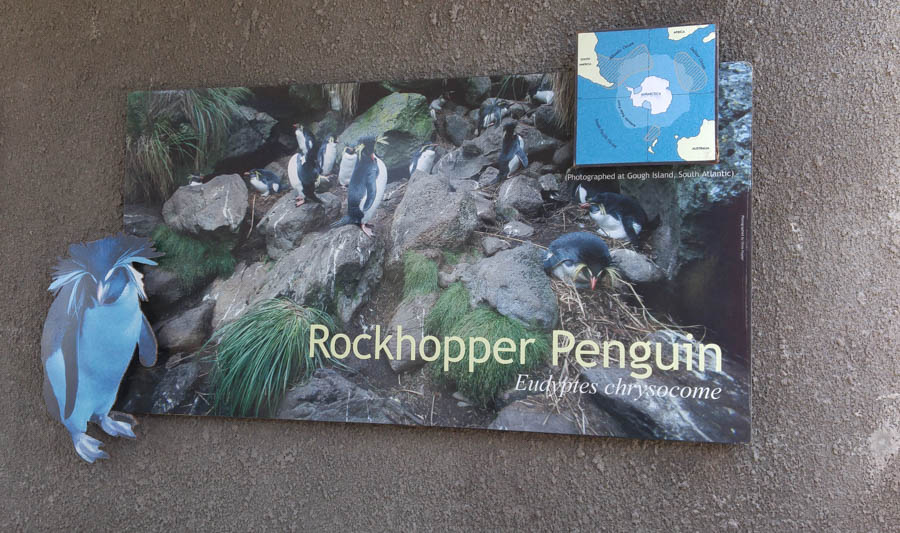
Why did they name it a "rockhopper"
(I saw Rockhopper penguins on my Antarctica adventure (another trip) - and they do hop from rock to rock even up hills)
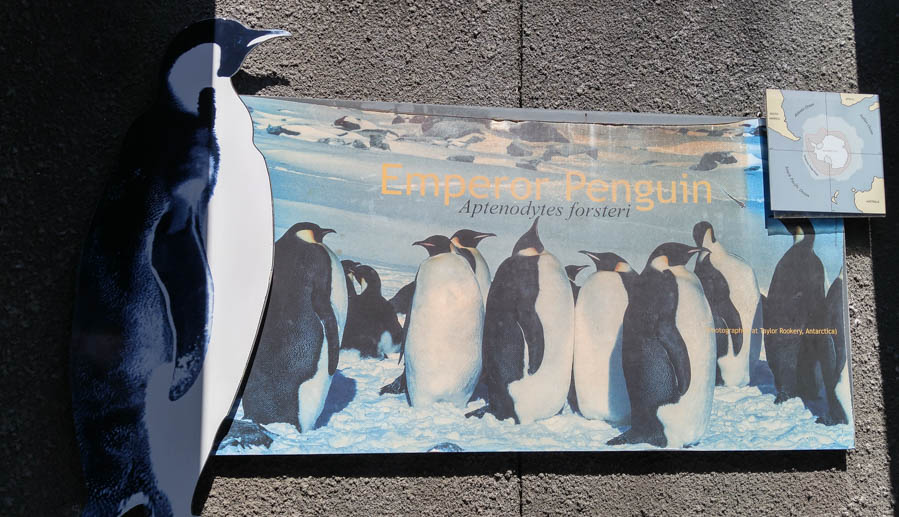
Dressed in the tuxedo all day!
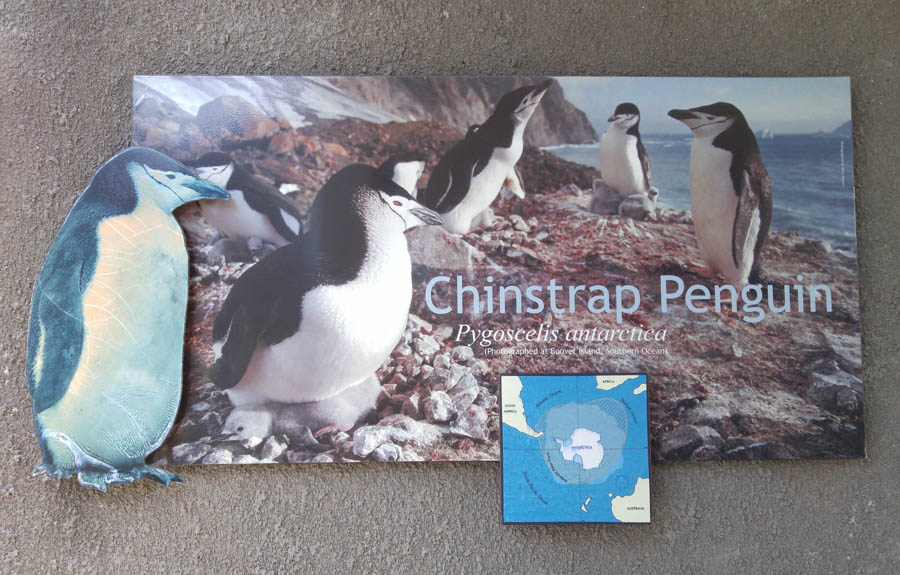
Cute!
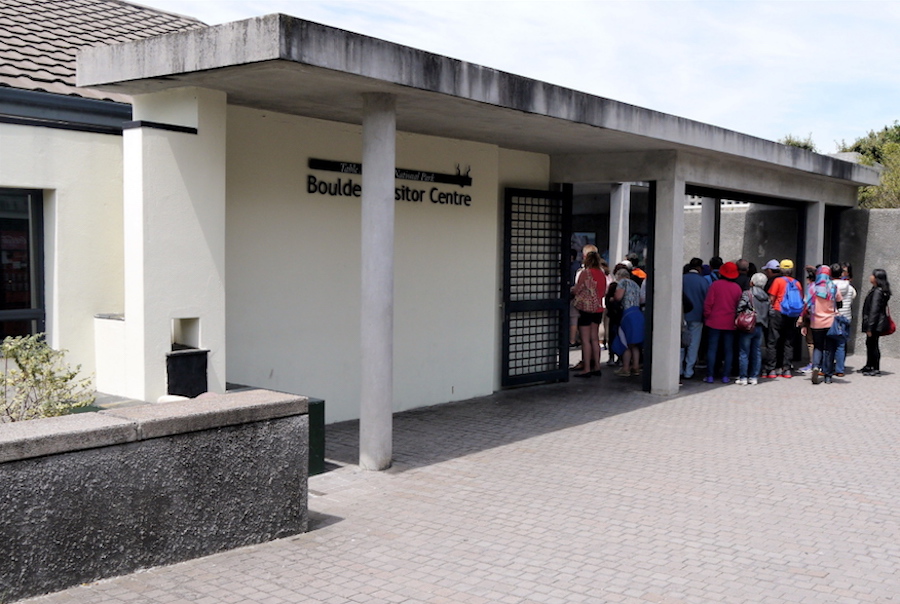
Come on in!

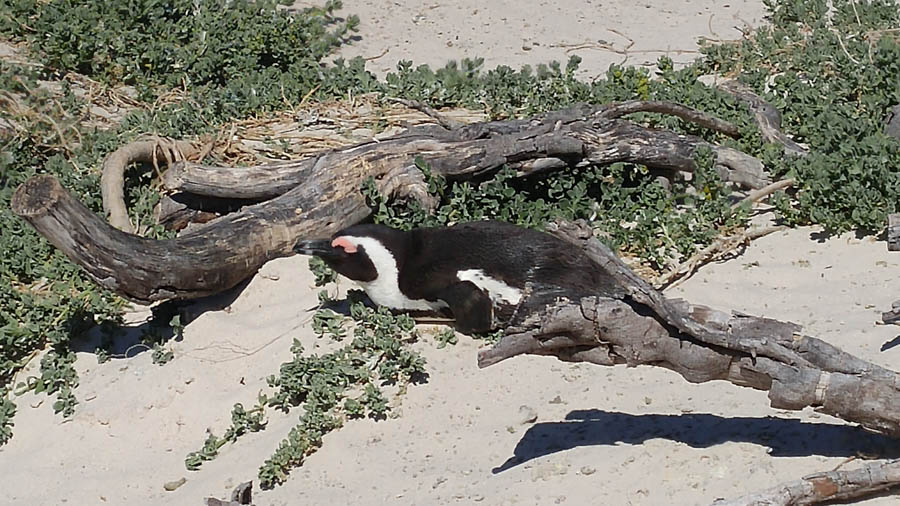
Soaking up the sun!
Did You Know?
1. African Penguins are also known as Jackass Penguins, Spheniscus demersus (Latin) and Blackfoot Penguins.
2. They eat mainly fish (anchovies, pilchards, sardines, mackerel and herrings) but they also eat squid and shellfish.
3. African Penguins are about 60cm tall - boys tend to be a little bigger than girls. They weigh between 2.4 and 3.6kgs.
4. African Penguins dive on average to 30m, but as deep as 130m.
5. They hold their breath on a dive for an average of 2.5 minutes.
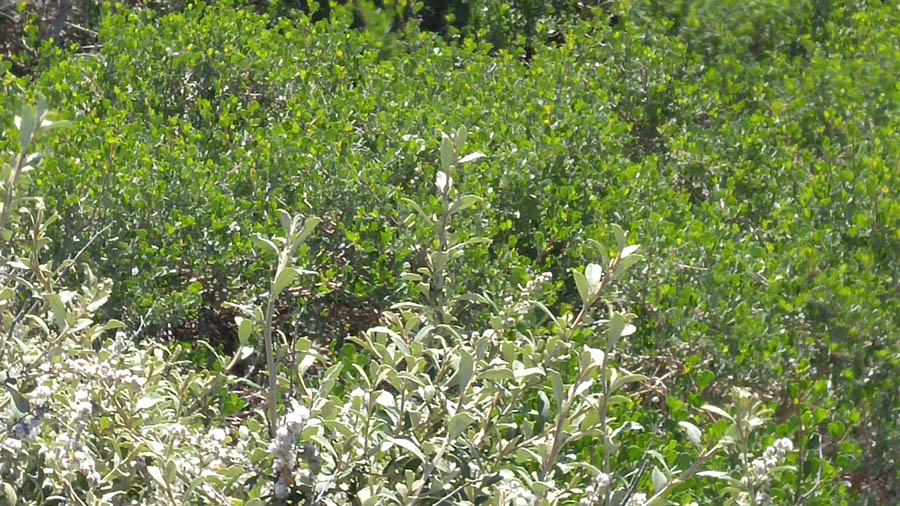
Hiding in the bushes

"I am sooooo cute!"
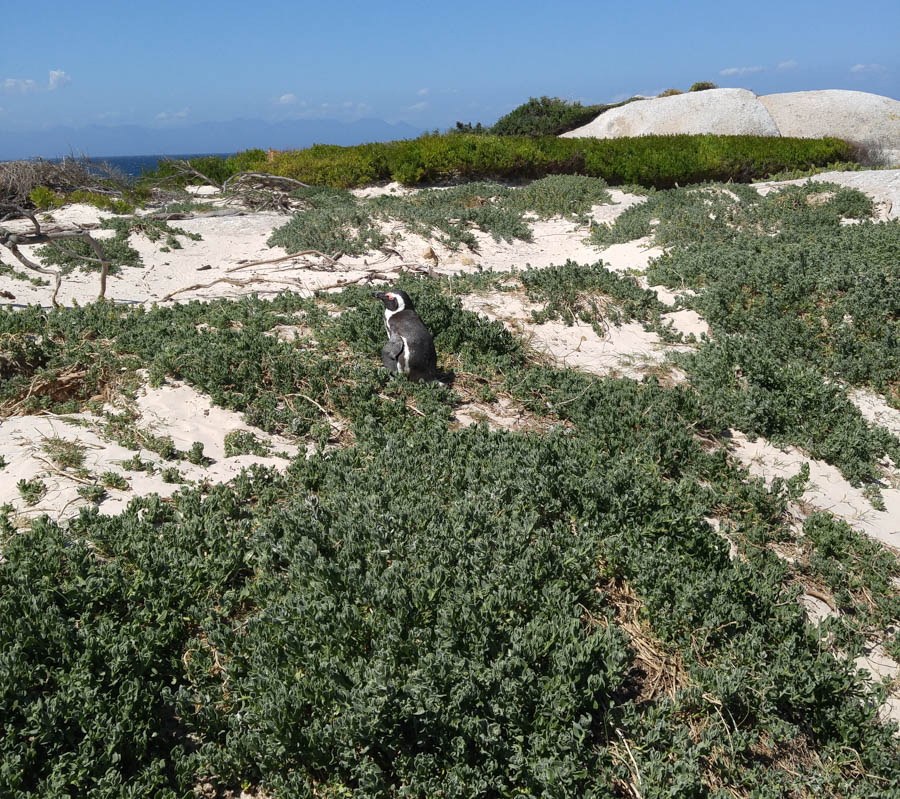
Getting up the sandy hill is a challenge
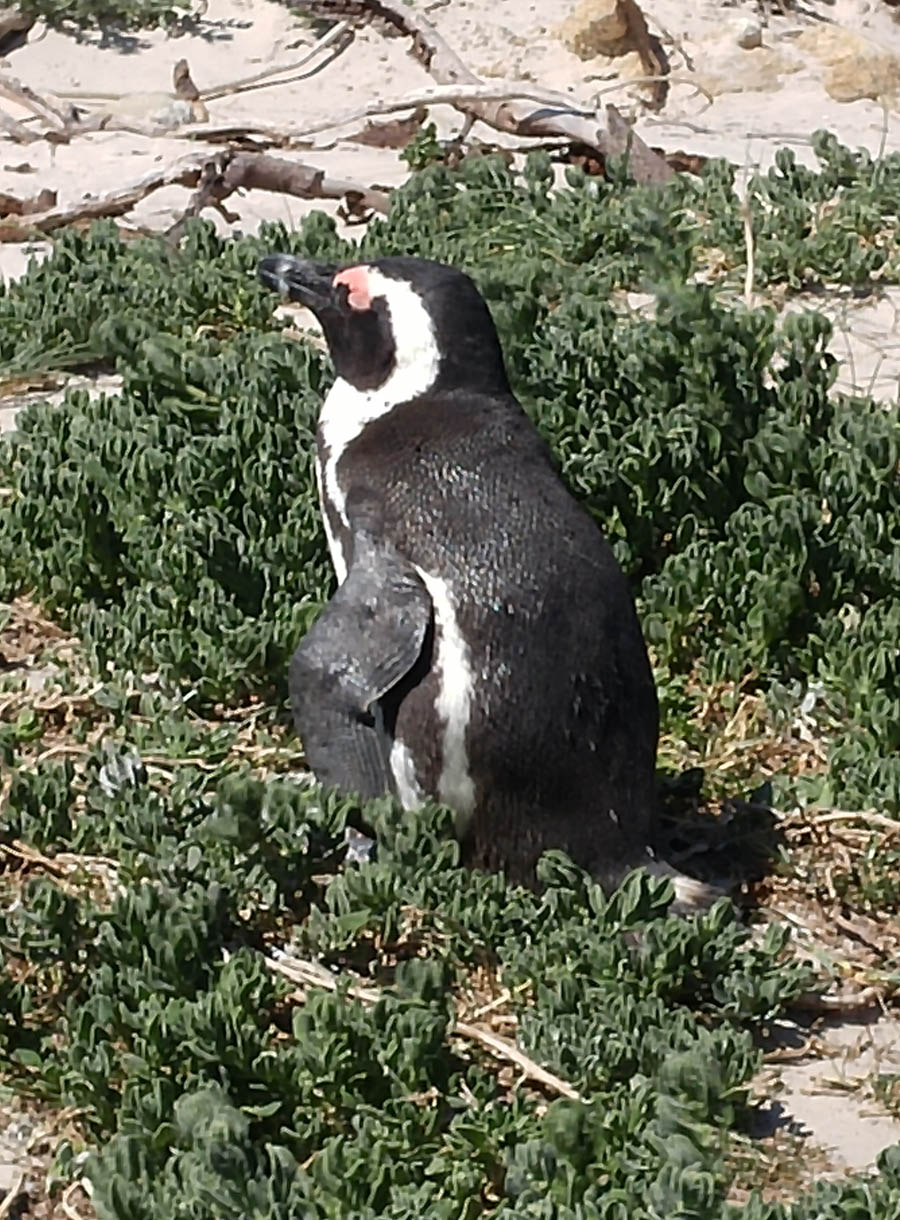
Just sitting
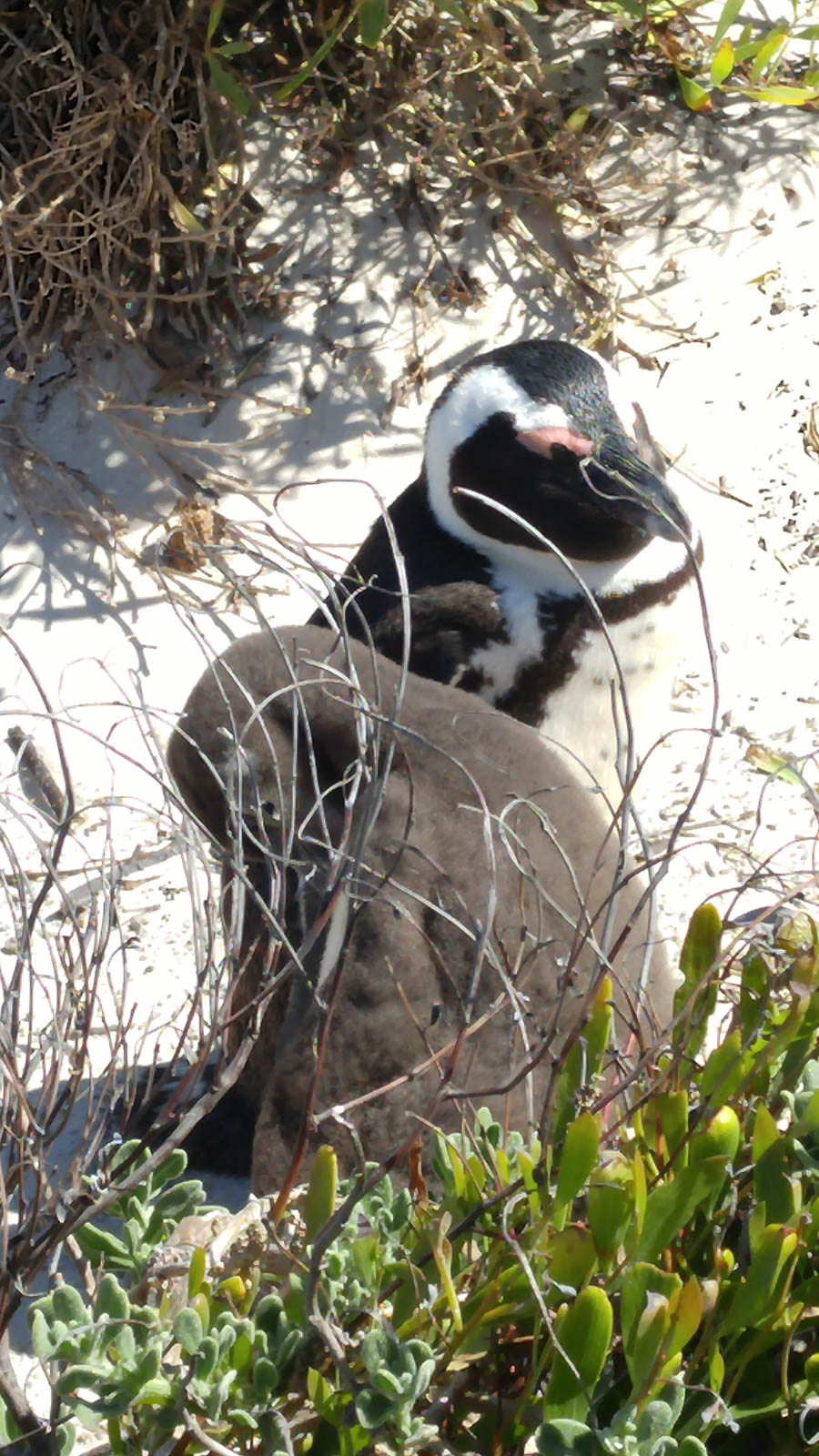
We got up pretty close!
Did You Know?
1. African Penguins can swim up to 20 km per hour when hunting, but their average swimming speed is 7km/h.
2. Average life span is 10 years.
3. Start breeding at approximately 4 yrs old, and normally lay 2 eggs in a nest that is burrowed in guano or sand.
4. Incubation period is about 38-42 days, with the mum and dad sharing the incubation duties.
5. They live in colonies on 24 islands and along the coast between Namibia and Port Elizabeth.

Up close and personal!

They are short so they do not have to stand tall in the wind!
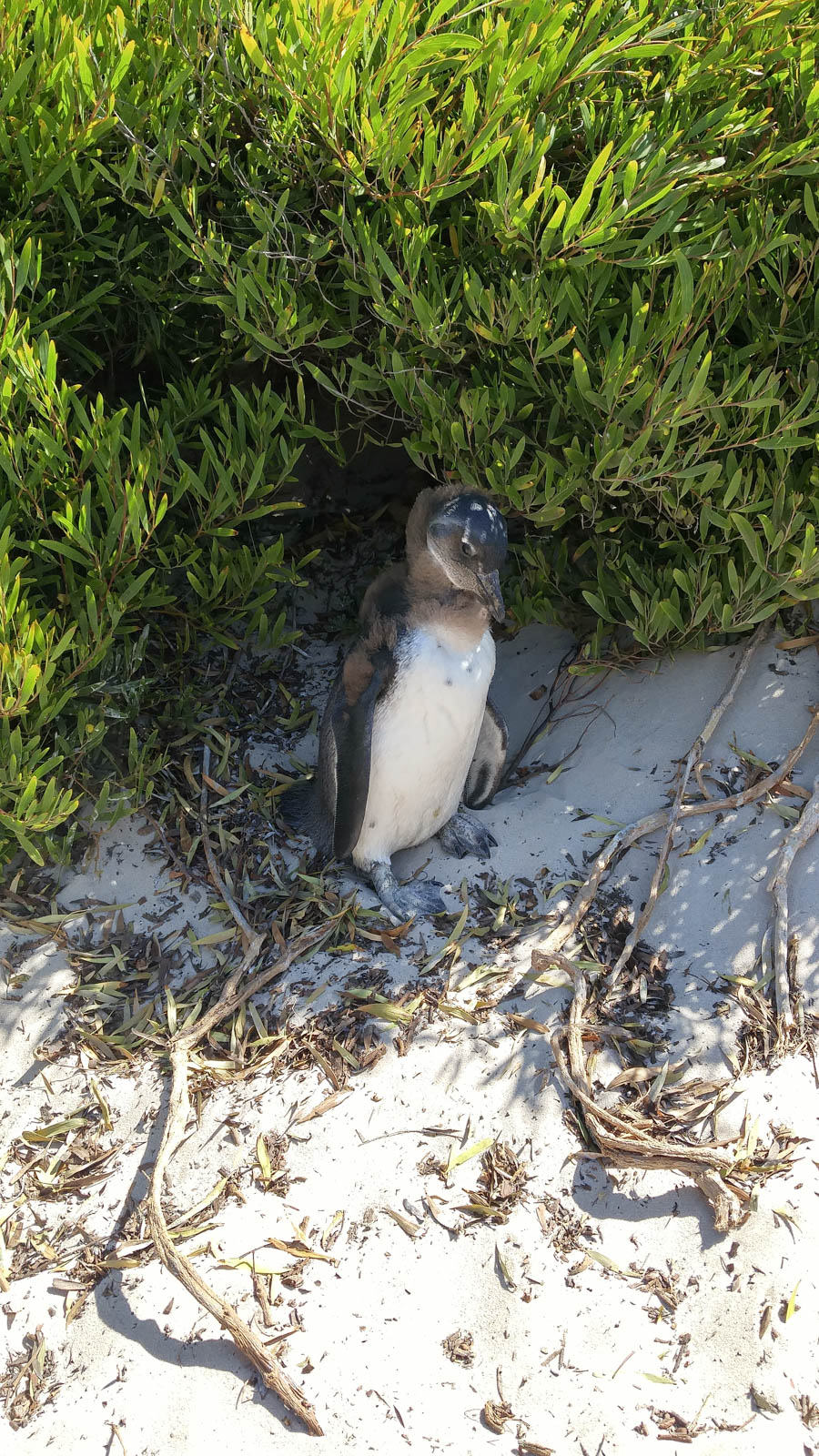
He can duck back inside the bushes if need be!
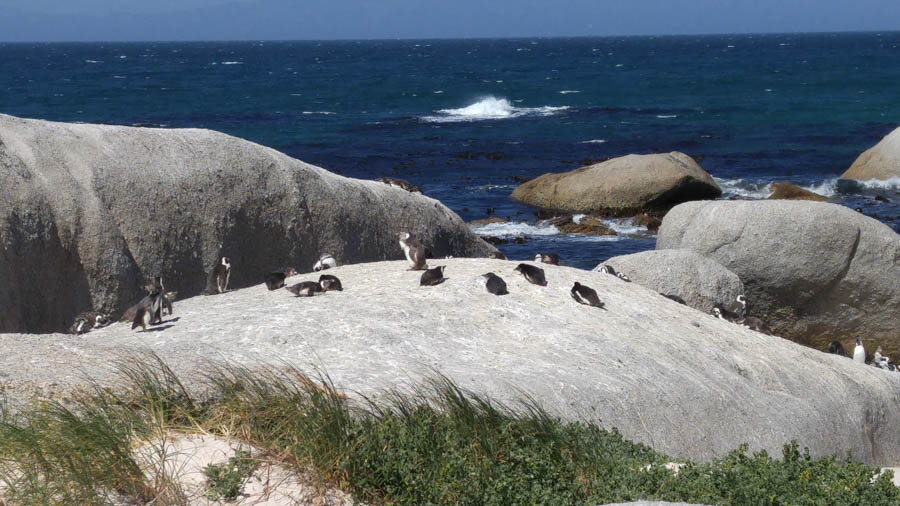
Sunning on the rocks is a nice passtime!

You can walk up fairly close but be careful

Close to civilization!

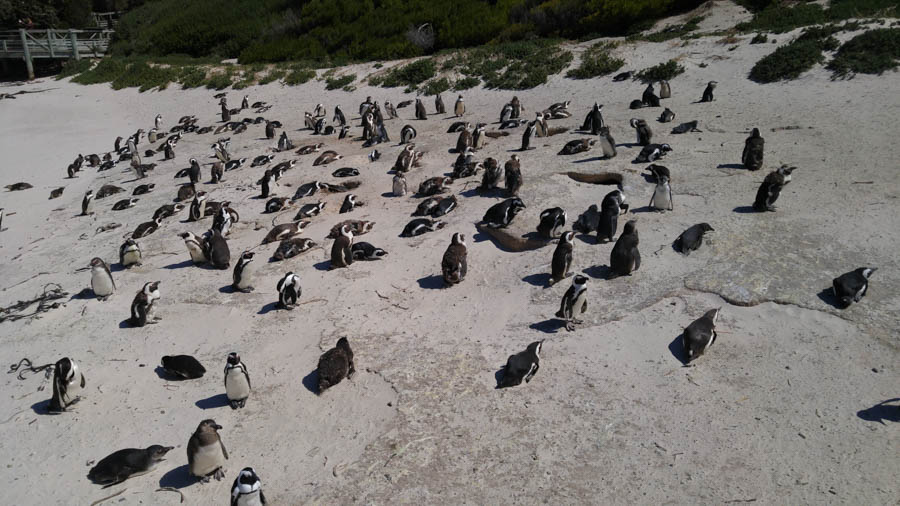
Just a few...
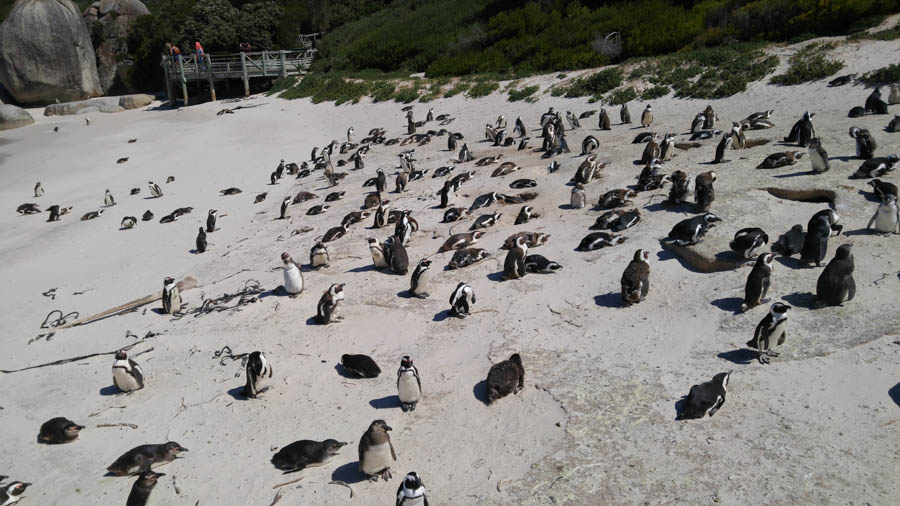
The local tuxedo shop does a brisk business

Just relaxing...
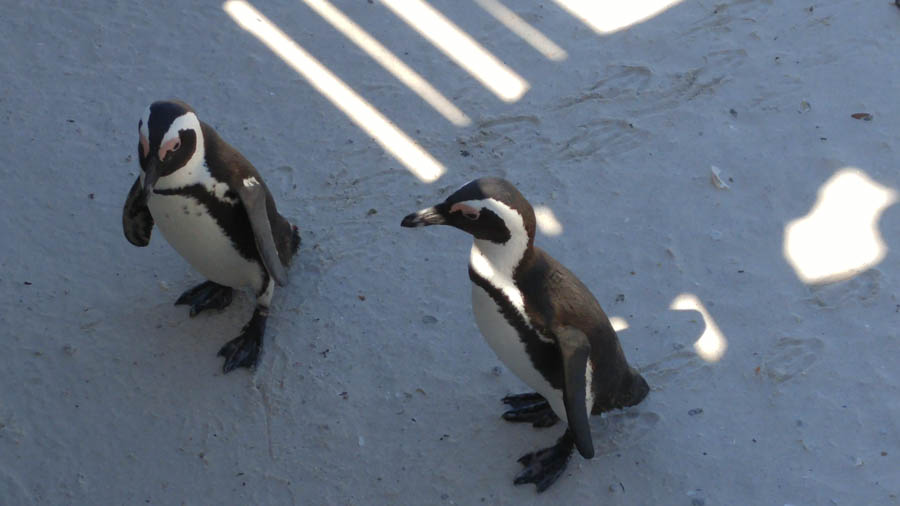
They come up to the railings to beg... DO NOT FEED THEM

"Come on guys... The water is too cool!"

They try to face the sun... Keeps their face dry!

Awe... Someone has a little one!

Mom and dad stand guard!
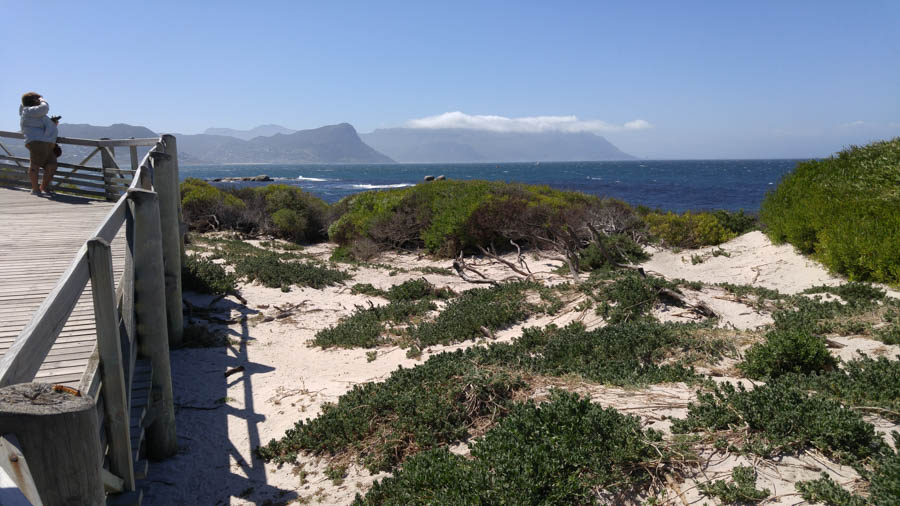
Well. good by to the Penguins


Another 40 minutes and we are in a botanical garden
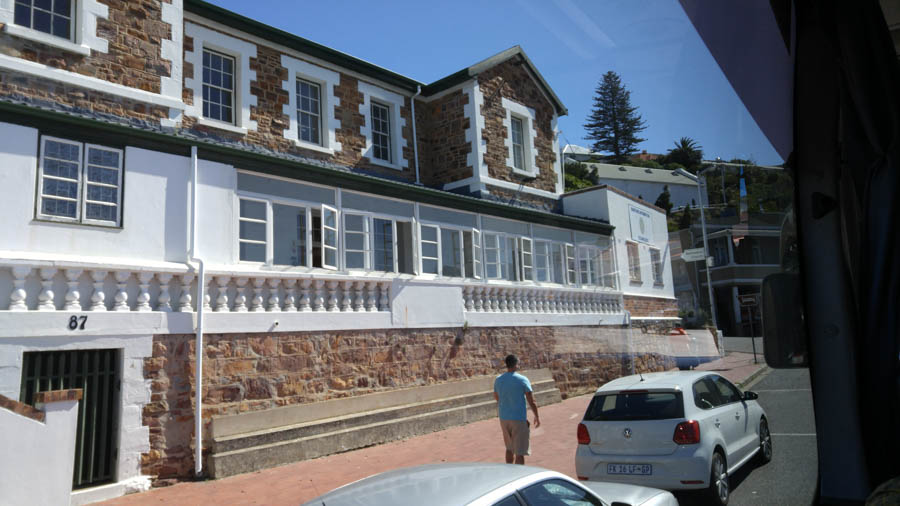
Passing through the
small towns along the way
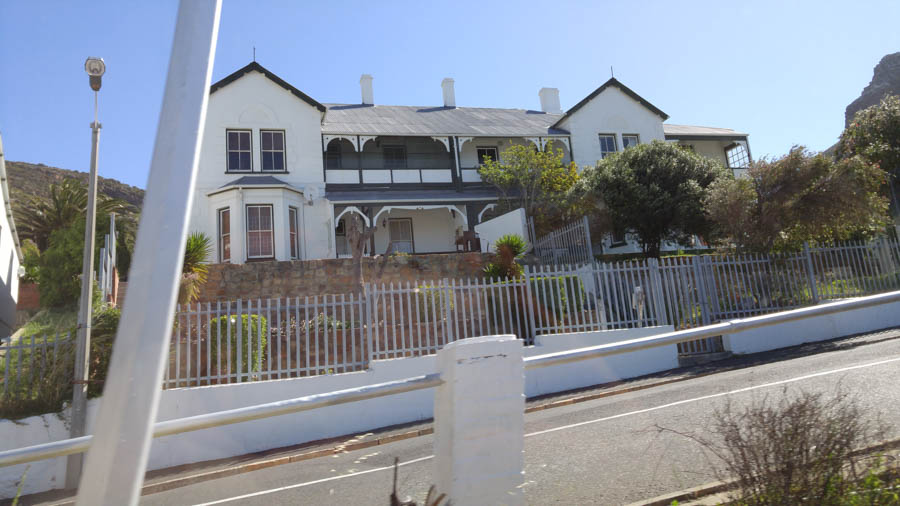
Seeing the sights

The hills are alive...
Did You Know? - Kirstenbosch is an important botanical garden nestled at the eastern foot of Table Mountain in Cape Town. The garden is one of nine National Botanical Gardens covering five of South Africa's six different biomes and administered by the South African National Biodiversity Institute (SANBI). Prior to 1 September 2004, the institute was known as the National Botanical Institute.
When Kirstenbosch, the most famous of the gardens, was founded in 1913 to preserve the country's unique flora, it was the first botanical garden in the world with this ethos. Kirstenbosch places a strong emphasis on the cultivation of indigenous plants.

Step right on in...

Beautiful well marked paths
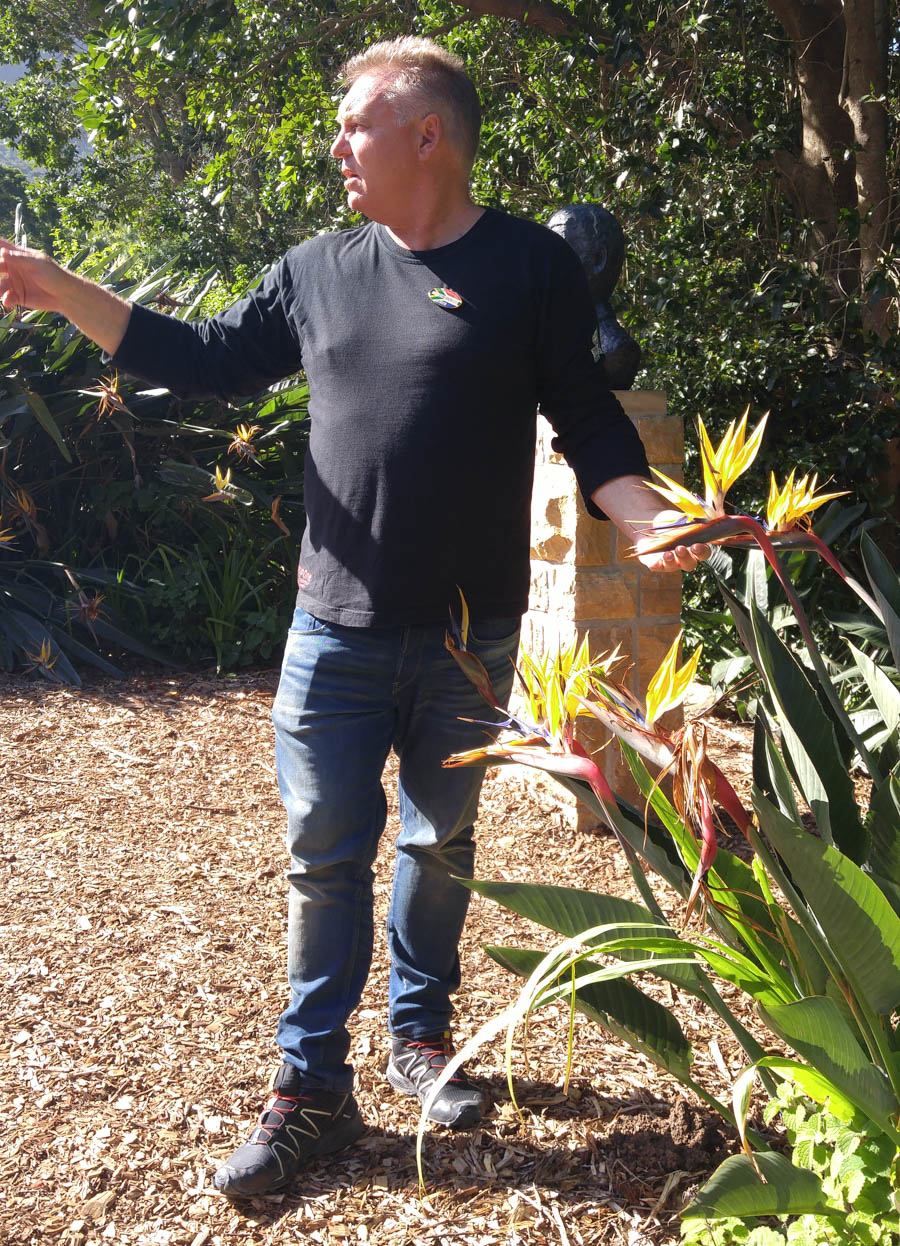
He was our guide for the day and quite an expert
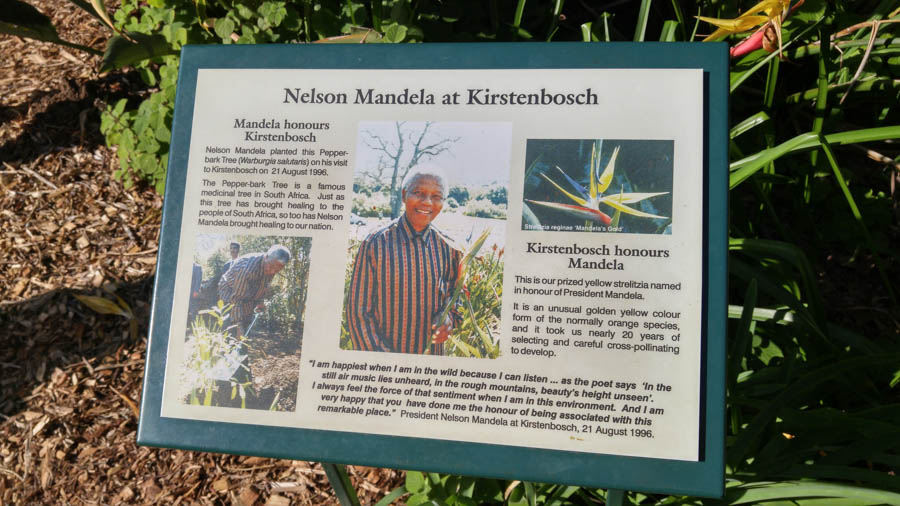
Nelson planted a tree in the mid-1990's
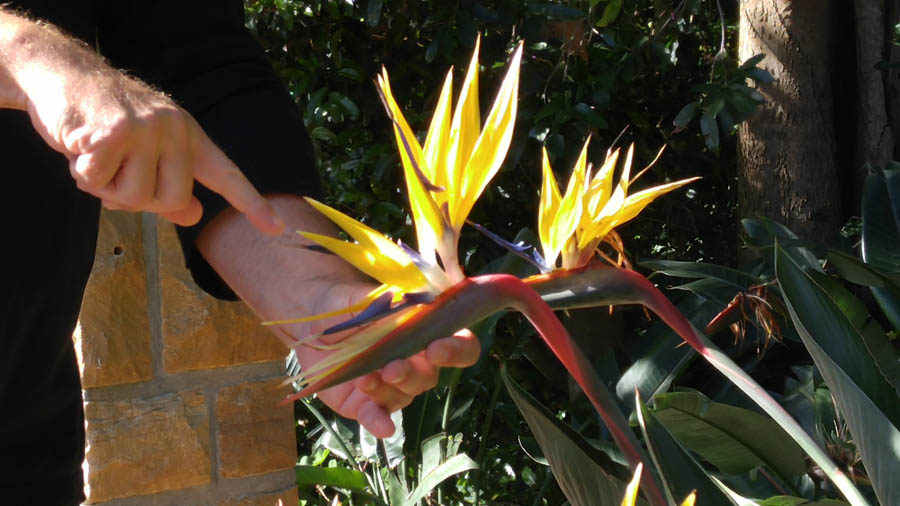
We get the real poop on the bird of paradise... The yellow one was very special and not normally seen in these parts
Did You Know? The scientific name is named after Charlotte of Mecklenburg-Strelitz, the queen consort of King George III of England.
A healthy, mature plant can produce up to 36 flower spikes a year
Plants grown in partially shady spots will produce larger flowers than the ones planted in full sun
The flower is pollinated by birds. When the bird sits on the spathe (the beak-like sheath), the weight of the bird opens up the bract and releases pollen on the bird’s feet, which is then transferred to the next flower the bird visits.
Birds of Paradise is the official flower of Los Angeles, California, where the majority of these flowers are grown in North America.
Birds of Paradise symbolize freedom, beauty and magnificence
The plant is related to the banana.
Birds of Paradise is native to South America, where it is known as the Crane Flower

The grounds were immaculate
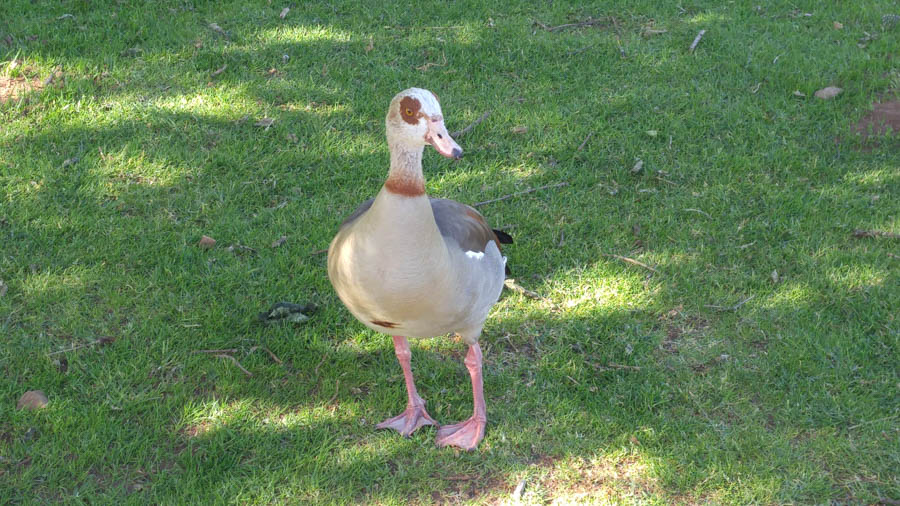
"Yes... I lost the fight!"
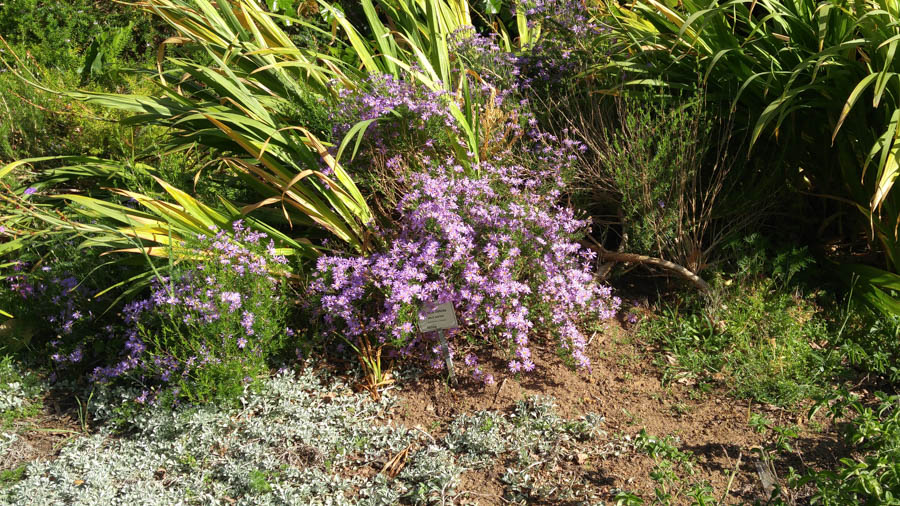
Local flowers
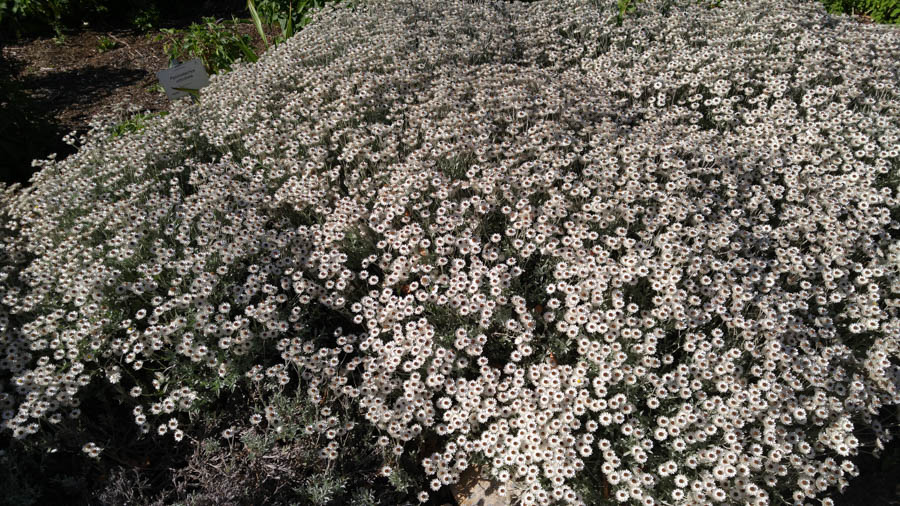
Flowers everywhere
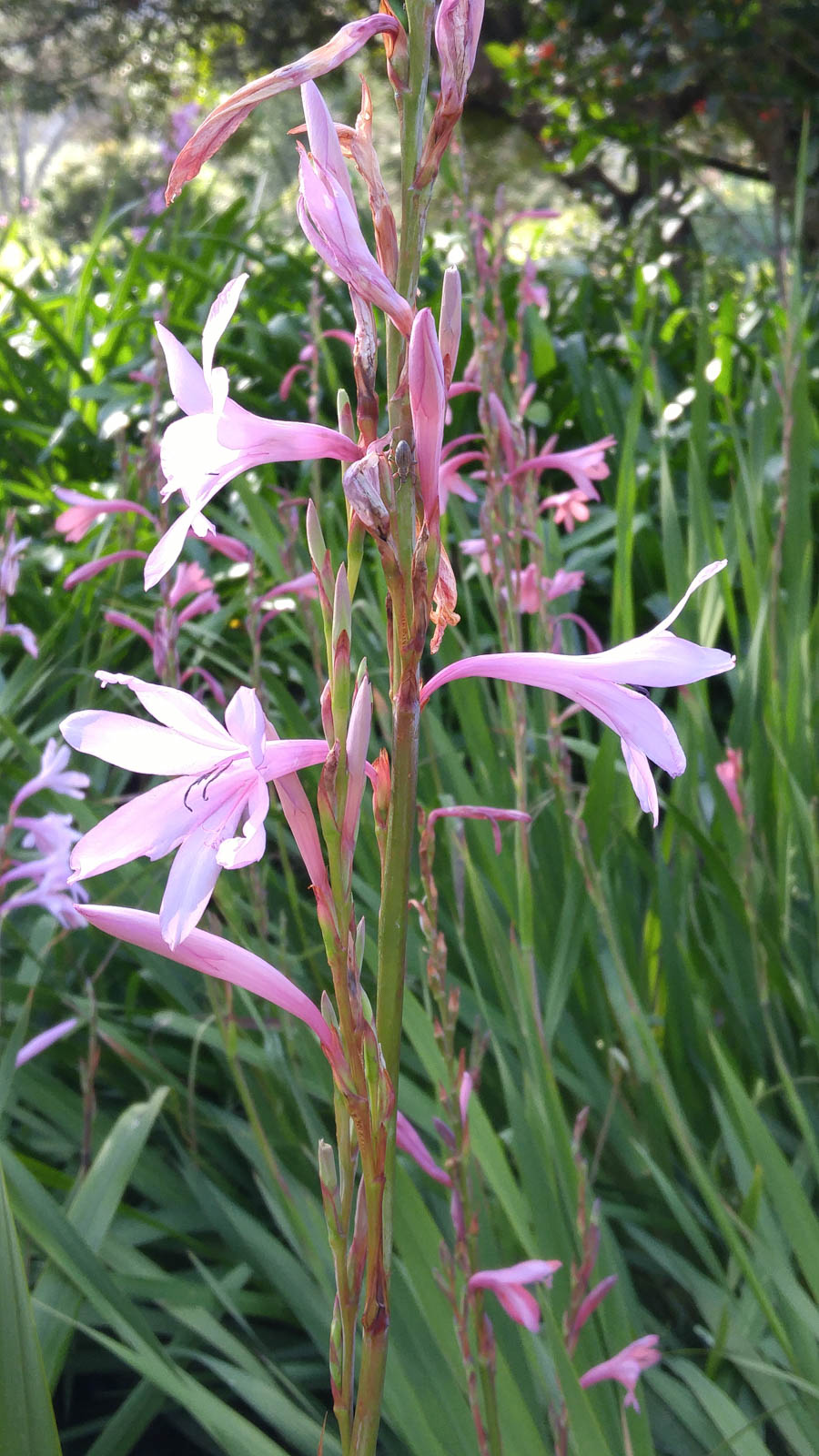
Simply beautiful
Did You Know? - The Kirsten part of the name is believed to be the surname of the manager of the land, J.F. Kirsten, in the 18th century. The bosch part of the name is a Dutch word for 'forest' or 'bush'.
In 2015, the International Garden Tourism Awards Body declared Kirstenbosch Botanical Gardens the International Garden of the Year.

Stinging Nettle
Did You Know? - Urtica dioica, often called common nettle, stinging nettle (although not all plants of this species sting) or nettle leaf, is a herbaceous perennial flowering plant in the family Urticaceae. It is native to Europe, Asia, northern Africa, and western North America, and introduced elsewhere.
The species is divided into six subspecies, five of which have many hollow stinging hairs called trichomes on the leaves and stems, which act like hypodermic needles, injecting histamine and other chemicals that produce a stinging sensation when contacted by humans and other animals.
The plant has a long history of use as a source of medicine, food, and fibre.

Excellent walking tour

Beware of dinosaurs
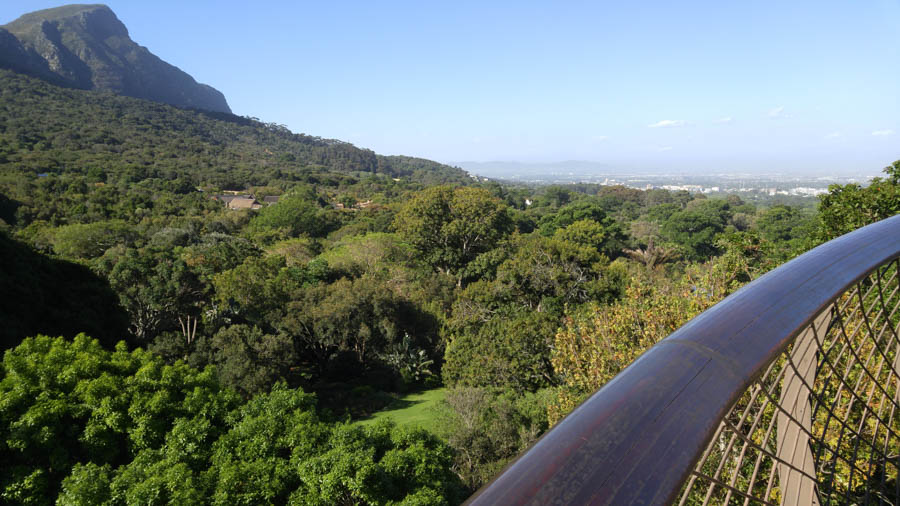
Cape Town in the distance
Did You Know? - The walkway was built to commemorate Kirstenbosch’s 100 th year in 2013 but, due to construction delays, only opened to the public in May 2014.
It is a steel-and-timber structure of 130m, starting at ground level and rising to some 12m above the ground. Because it’s crescent-shaped, the walkway ends a short distance from the start. It is also suitable for wheelchair users.
Its ingenious design makes it a sinuous structure that winds its way through the trees – like the indigenous tree snake it is named after that is rarely seen on the ground.
In an act of ‘bio-mimicry’, the outer steel frame resembles the rib cage of a snake enclosing the wooden bridge and looks a bit like a roller-coaster ride for pedestrians.
Construction had to take account of the sensitivity of the site; every tree in the arboretum was surveyed and drawn on a 3D map so that the path of the walkway could be plotted without causing any harm to the trees.
In fact, one tree was accommodated by cutting a hole through the bridge's timber – and it is now known as the ‘hugging tree’, which is sure to be a hit with children.
During assembly, the contractors brought in 6m lengths of the prefabricated steel structure to be bolted in situ, while the foundations were hand dug and filled in with reinforced concrete pads.

Walking above the trees
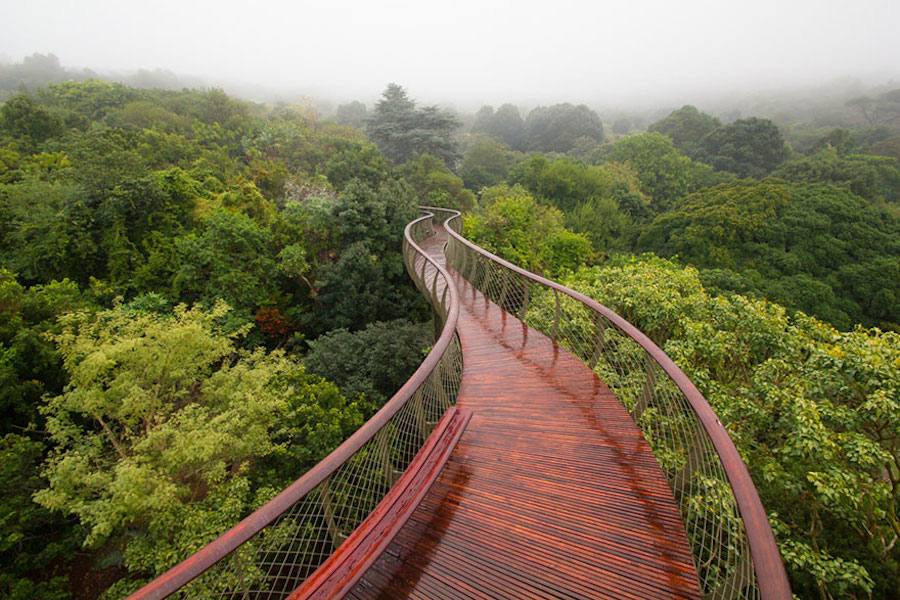
The 'Boomslang'
Did You Know? - The 'Boomslang' (named after the arboreal tree snake indigenous to South Africa) is a steel-and-timber canopy walkway that was built to commemorate the garden's 100th anniversary. It offers magnificent views and takes you through the tree tops of the Arboretum section of the garden. At its highest point, it's 12m above the ground.

Walking shoes a definite requirement
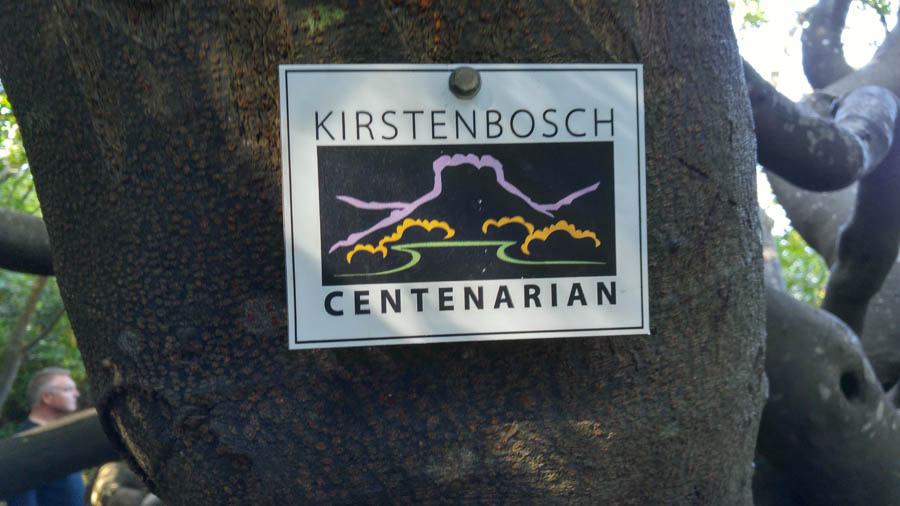
One hundred years old.... Looks pretty good!
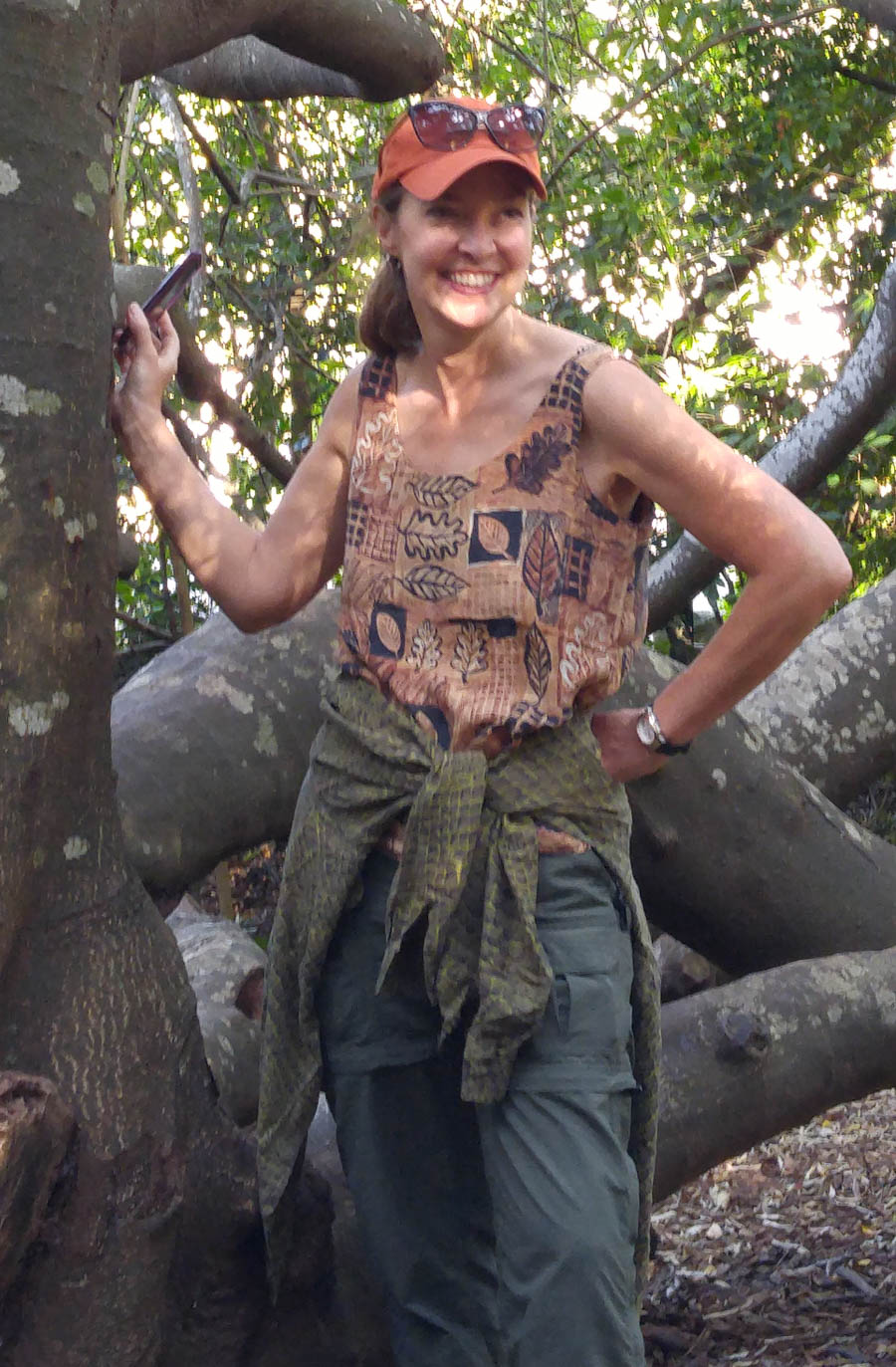
Ready to explore

The Aloe Tree
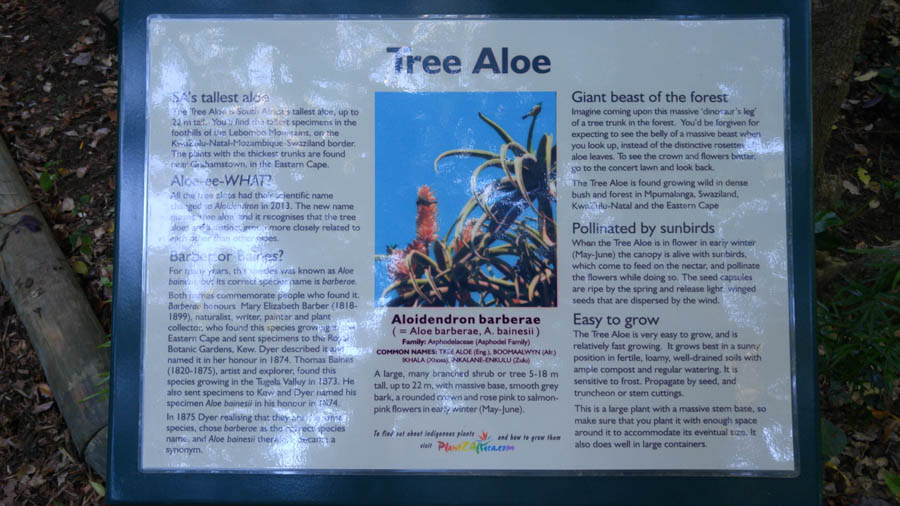

Towering over the regular plants
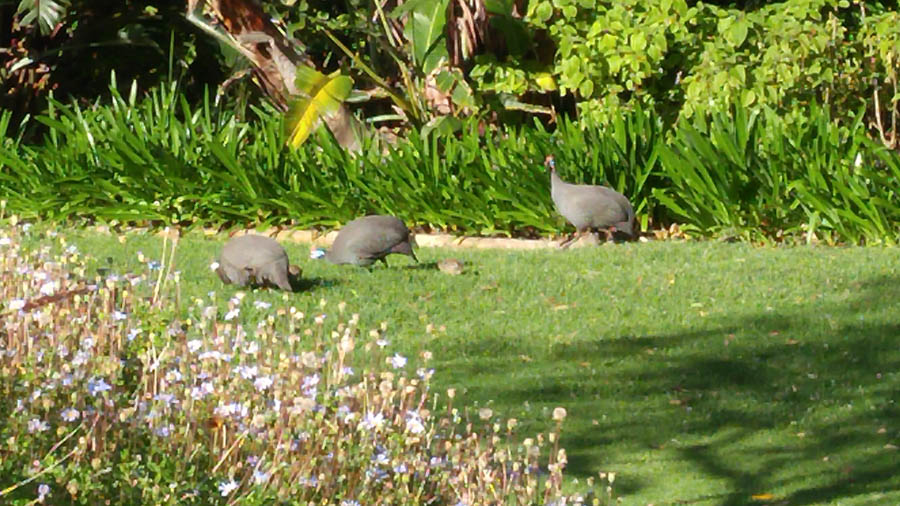
Looks like family outting
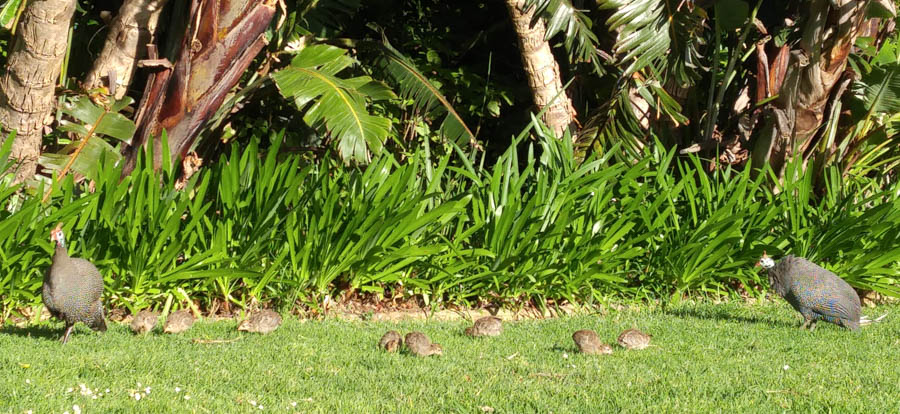
Mom and Dad keep an eye out for predators

Interesting sculptures in the garden
Did You Know? - At the lower end of the garden you'll find a display of Mambo Sculptures. These artworks in the Shona tradition are from Zimbabwe. While the individual sculptures are often swapped out, the display is permanent. You can also buy one of these stone sculptures from the Visitor Centre.


Twenty minute drive to our hotel!
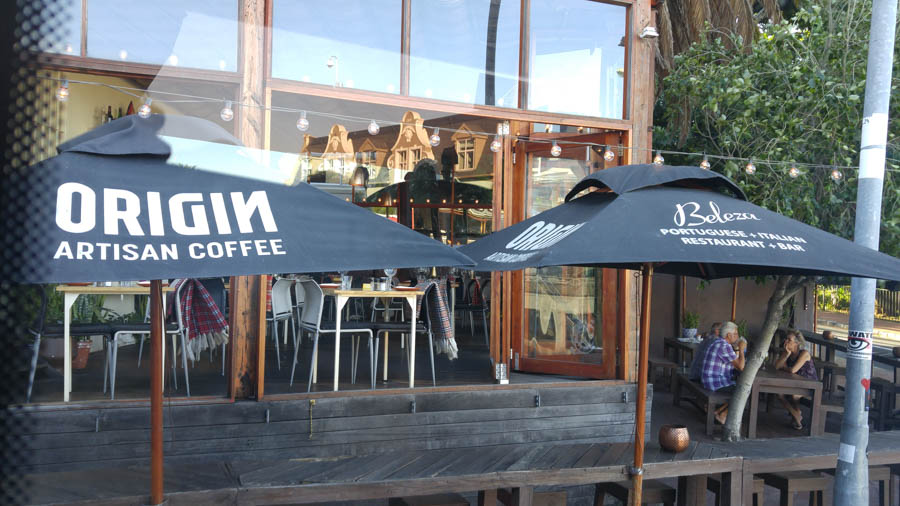
On our way to dinner

A very cute courtyard at our guest houre

Some visiting and reliving the day!
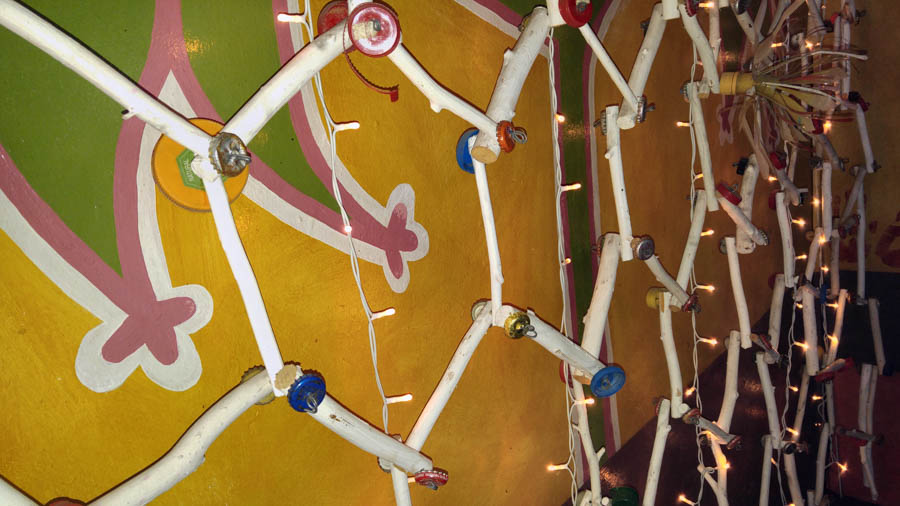
Well decorated African Hotel (We had our faces painted here)
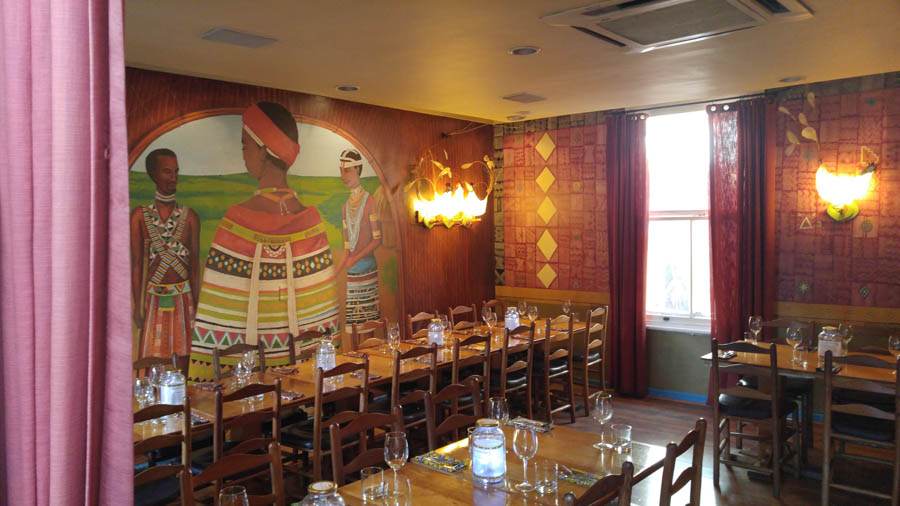
Come on in!

Asanda ar your service!
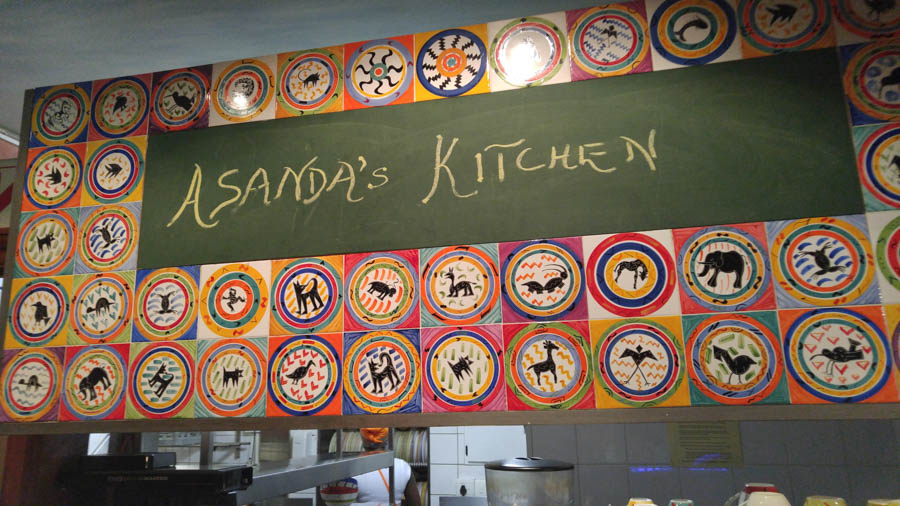
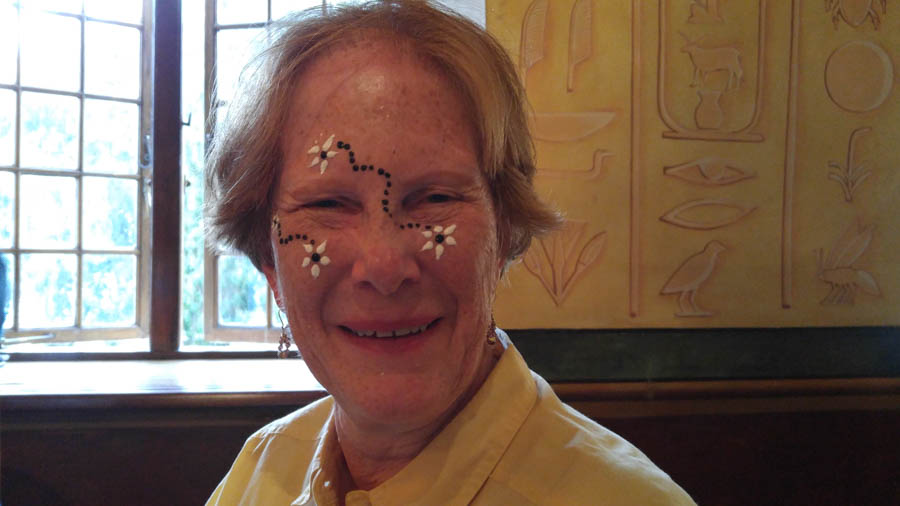
One must get painted!
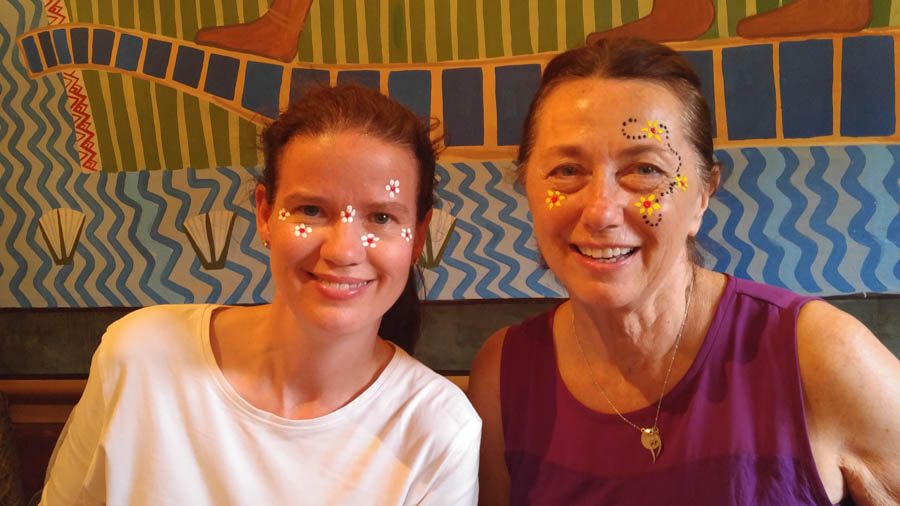
Looking like the natives

Big smiles and our face painting artist is behind us
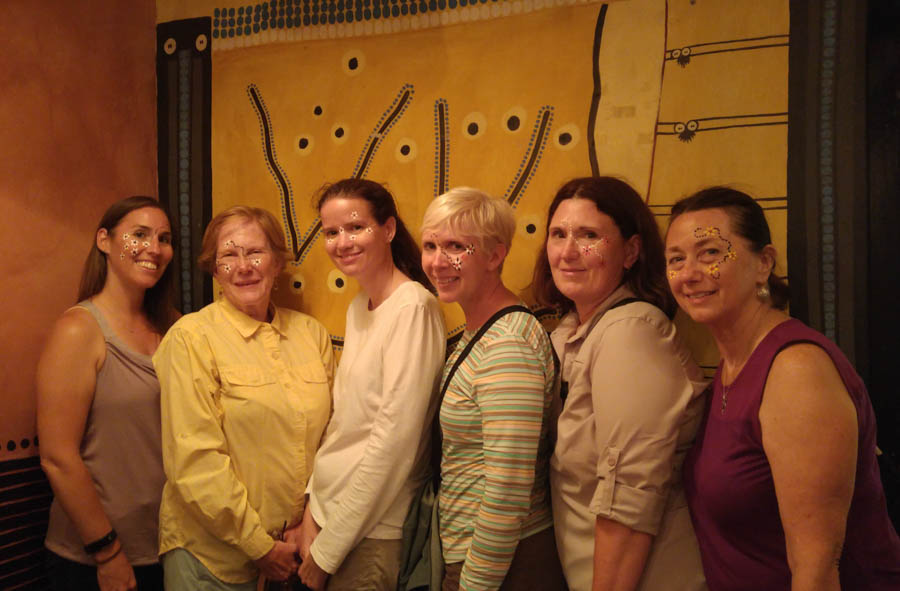
"We are tired... Eat and crash! Tomorrow is another day!"
